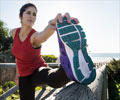A study published in BMC Medicine 2012 indicates that measurement of various body parameters in long-distance runners is possible though difficult
The human body is designed to adapt to stress and strain. A recent study attempted to assess the adaptive responses of different tissues, organs and functional systems of the body exposed to enduring periods with limited time for regeneration.The study was conducted on athletes participating in the TransEurope FootRace 2009 (TEFR09), which was one of the longest ultramarathons of nearly 4500 km in 64 days. The runners had an average of 7 to 13 hours of rest per day. The race took place between 19 April and 21 June 2009 and extended from South Italy to Norway. An ultramarathon is defined as a footrace of 50 kilometers or more. Multistage ultramarathons are races in which each stage has a distance of an ultramarathon.
This study was conducted on 44 volunteers. The volunteers were subjected to baseline tests and measurements. They also underwent regular MRI imaging with the help of a mobile MRI unit. MRIs of the muscles, joints, functional MRIs of the brain, heart and blood vessels, and total body MRI were obtained. Besides, other tests were also conducted on the subjects during the study like ice-water pain test (which tests pain perception), psychometric questionnaires, bioelectrical impedance analysis (BIA), skinfold thickness and limb circumference measurements, daily urine samples, periodic blood samples and electrocardiograms (ECG). The tests were designed to detect changes due to injury, adaptation, regeneration, reparation and overuse processes in the musculoskeletal system; brain, mind and pain perception; cardiovascular system and body composition. The tests were also conducted at the end of the race or when an athlete dropped out. In addition, 15 out of the 44 athletes underwent the tests again 8 months after the race.
The researchers were able to complete more than 95% of the planned MRI investigations during the study. They conducted 741 MR-examinations with 2,637 MRI sequences, 5,720 urine samples, 244 blood samples, 205 ECG, 1,018 BIA, 539 anthropological measurements and 150 psychological questionnaires.
The study thus shows the feasibility of conducting such a study in long-distance runners. Data obtained from such studies is useful in studying various aspects of stressful conditions on the human body.
Reference:
Uwe HW Schütz et al. The Transeurope Footrace Project: Longitudinal data acquisition in a cluster randomized mobile MRI observational cohort study on 44 endurance runners at a 64-stage 4,486km transcontinental ultramarathon.










